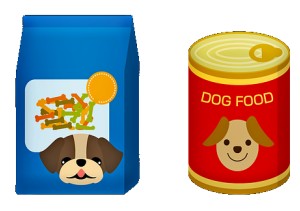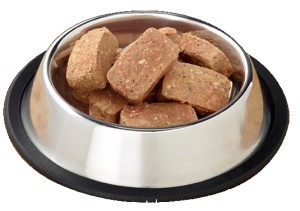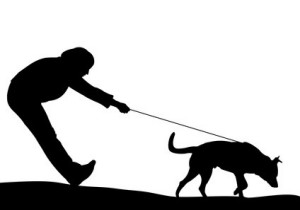What Makes a Dog Food Good – or Awful
By Michele Welton, Dog Trainer, Breed Selection Consultant, Author of 15 Dog Books
3 Best Ways To Feed Your Dog Healthy Food
What Every Puppy Owner Should Know About Feeding
A Quick Way to Make Homemade Dog Food
Pros and Cons of Raw vs Cooked
→ What Makes a Dog Food Good – or Awful
Truth and Lies on Dog Food Packages
5 Best Kibble and Canned Dog Foods
5 Reasons Not To Feed Your Dog Grains
Two Shocking Reasons Vets Recommend Kibble and Canned Dog Food
How To Tell If Your Dog Is Overweight – And What To Do About It
What your dog needs to eat – and why it's not provided by most dog foods
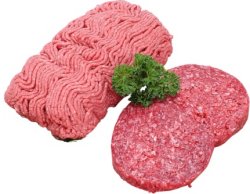
Good dog food must have meat as the main ingredient. Not only muscle meat (such as ground beef or chicken breast), but also organ meat (such as liver or kidney) and bone (or bone meal).
To stay healthy, your dog needs to eat meat.
His digestive tract is tailor-made for eating meat.
The shape of his teeth, the hydrochloric acid in his stomach, his digestive enzymes, his short, straight intestinal tract... that's the digestive system of a meat eater.
People who claim that dogs have "evolved" to eat grains and carbohydrates know very little about how evolution works.
The entire canine family (wolves, coyotes, wild dogs, domesticated dogs) has a digestive system designed to eat, digest, and absorb nutrients from meat.
That's why the primary ingredient AND THE NEXT FEW ingredients of any acceptable dog food must be meat. A named meat.
Like this: Beef, beef liver, beef heart, beef kidney, beef spleen, ground beef bone...
Not like this: corn, meat and bone meal, corn gluten meal, beef fat, soybean meal, poultry by-product meal.... and then, ah-ah! some actual chicken! but then.... egg and chicken flavor, whole grain wheat, animal digest... Honestly, folks, this is the worst thing ever, and this is a MAJOR dog food brand. It's unconscionable to even sell this garbage.
When the ingredients waffle around by saying meat meal or animal digest or animal fat or fish oil, the manufacturer is deliberately creating wiggle room so they can search the open market for the cheapest product.
No. You want your dog eating a named meat (or fish). Beef. Chicken. Turkey. Lamb. Duck. Bison. Venison. Salmon.
That's real meat.
And meat is expensive.
Which is why most dog food companies go light on the meat and heavy on everything else, such as.....

- Grains and cereals. Wheat, corn, soy, barley.... kibble and canned manufacturers love to substitute these cheap sources of protein for meat.
Unfortunately, dogs can't digest grains and cereals very well. Much of it goes right through them and they produce a lot of waste. Grains and cereals are also high in carbohydrates, which help make dogs fat.
Even worse, many dogs are allergic to grains and cereals. Allergies in dogs means itchy skin, where the dog tries to soothe the itch by licking his front feet obsessively, or by rubbing his face against the carpet, or by rubbing his body against the furniture.
Grains and cereals can also cause excessive shedding or dandruff, loose stools, gassiness and flatulence.
You might never think to connect these problems with the grain in your dog's diet, but that is often the case. 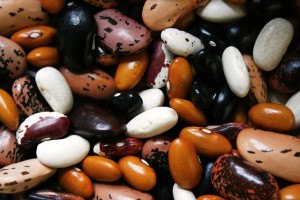 Legumes. Now that more and more owners are shying away from foods with grain, manufacturers need another cheap meat substitute to sneak past you.
Legumes. Now that more and more owners are shying away from foods with grain, manufacturers need another cheap meat substitute to sneak past you.
They've chosen legumes. Chickpeas, peas, lentils, kidney beans.... yes, they're high in protein, but it's not the kind of protein that your dog can easily digest or absorb. Legumes can cause intestinal discomfort and gassiness. And once again, legumes are high in unneeded carbs.
There is even a suspicion/concern that feeding too many legumes – as meat substitutes – might be triggering a specific form of heart disease in some dogs.
- Starchy vegetables. Manufacturers have also begun throwing potatoes, sweet potatoes, and butternut squash into dog food.
These starchy, high-carb foods are alien to dogs and quickly get converted into sugar, which causes your dog's blood sugar to spike, predisposing him to insulin resistance or diabetes. Now, it's certainly okay if your dog eats a bit of sweet potato or squash, but not if it's replacing meat.

- Junk fillers and unrecognizable stuff such as beet pulp, rice flour, corn gluten meal, wheat middlings.... honestly, raise your hand if you've ever thought of feeding your dog wheat middlings. Nope, me neither!
What about animal digest? This ingredient is defined as "material which results from chemical and/or enzymatic hydrolysis of undecomposed animal tissue."
Doesn't that sound tasty? It's a boiled concoction from the rendering plant, and the "animal tissue" can include (really gross here, sorry) roadkill and dead pets that were euthanized at the animal shelter. Yes. The FDA has found pentobarbital – the chemical used to euthanize animals – in some brands of "dog food".
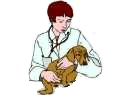 Australian veterinarian Dr. Ian Billinghurst says:
Australian veterinarian Dr. Ian Billinghurst says:
"If you look at the ingredient list on a can or a bag of pet food – with understanding – you will realise that what is being listed is a heap of rubbish. Definitely not the wholesome nutritious food you would want to feed to a valued member of your family."
Takeaway: You want LOTS of meat in your dog's food. The first three ingredients should be meat or fish: a named meat or fish. No grains or corn. No (or maybe ONE) legume such as lentils. No (or maybe ONE) starchy vegetable such as sweet potato or butternut squash. And no junk fillers.
For me, an ideal dog food looks like this
✓ All ingredients would be human edible-grade or USDA-APPROVED for human consumption. Not just "from USDA-inspected facilities", which actually suggests the ingredients failed the inspection. If they had passed the inspection, the company would say so.
✓ The first two ingredients should be meat/fish. I prefer at least one (preferably both) of the third and fourth ingredients to also be meat/fish (or eggs).
Beef, beef liver, beef heart, beef kidney, beef spleen....
Duck, duck necks, organic kale, whole sardines....
Turkey meal, chicken meal, eggs, whitefish meal....
✓ The meats should be specified. Not generic "meat meal."
✓ Organ meat should be specified: beef spleen, chicken liver, bison kidney, etc. Not generic "by-products."
✓ I prefer a calories profile of 45-55% calories from protein, 35-45% calories from fat, 0-20% calories from carbs.
When I say "calories from" .... I don't mean the Guaranteed Analysis label, which simply gives percentages of proteins and fats by how much weight they comprise of the total food. [read more]
✓ No grains (wheat, soybeans, corn, barley, rice, etc.).
✓ No legumes (peas, chickpeas, lentils, pinto beans...).
✓ No starchy vegetables (potatoes, sweet potatoes, butternut squash...).
✓ If extra fat has been added, the source should be specified: salmon oil, herring oil, cod liver oil, etc. Not generic "fish oil" or "animal fat."
✓ No junk fillers or unrecognizable stuff such as beet pulp, rice flour, corn gluten meal, animal digest, wheat middlings....
✓ Meat and eggs should be sourced from pasture/grass-fed beef and free-range poultry; fish should be wild-caught, not factory-farmed.
✓ All ingredients should be sourced from the US, or from another specifically-named country such as "grass-fed lamb from New Zealand."
✓ The meat should be raw or very lightly cooked. Beware of kibble and canned companies who claim their foods are "gently" cooked. There is no legal definition of "gently" so companies have latched onto that word to make you think they haven't cooked their food at extremely high heat that damages the nutrients.... which virtually all of them have done.
There are NO commercial dog foods that meet all of this important criteria. Unless you make your dog's food yourself, you will always be compromising on something.... often several somethings.
That being said, here are my recommendations for frozen and freeze-dried dog foods that come the closest. Also a few kibble and canned foods that are "okay" for occasional meals.
MORE ABOUT FEEDING
HONEST ADVICE ABOUT TRAINING
My best-selling books – now available FREE on my website
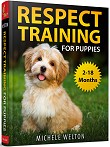 Respect Training For Puppies: 30 seconds to a calm, polite, well-behaved puppy is for puppies 2 to 18 months old. Your puppy will learn the 21 skills that all family dogs need to know. Click here to read for free.
Respect Training For Puppies: 30 seconds to a calm, polite, well-behaved puppy is for puppies 2 to 18 months old. Your puppy will learn the 21 skills that all family dogs need to know. Click here to read for free.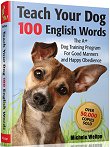 Teach Your Dog 100 English Words is a unique Vocabulary and Respect Training Program that will teach your adult dog to listen to you and do what you say. Click here to read for free.
Teach Your Dog 100 English Words is a unique Vocabulary and Respect Training Program that will teach your adult dog to listen to you and do what you say. Click here to read for free.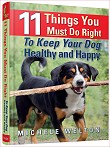 11 Things You Must Do Right To Keep Your Dog Healthy and Happy helps your dog live a longer, healthier life. Get my honest advice about all 11 Things before you bring home your new puppy, because some mistakes with early health care cannot be undone. Click here to read for free.
11 Things You Must Do Right To Keep Your Dog Healthy and Happy helps your dog live a longer, healthier life. Get my honest advice about all 11 Things before you bring home your new puppy, because some mistakes with early health care cannot be undone. Click here to read for free.

